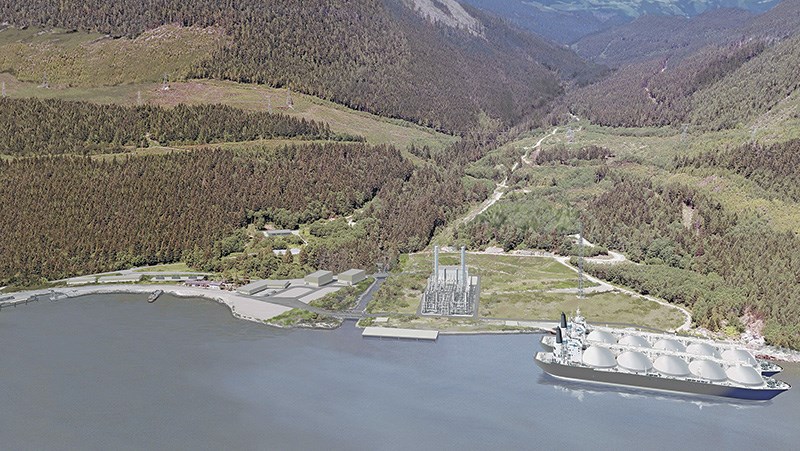British Columbia’s first liquefied natural gas (LNG) export plant has started.
Woodfibre LNG, a facility proposed near Squamish, just north of Vancouver on Howe Sound, has announced it will move forward with its $1.6 billion investment.
“This project is a go,” said Byng Giraud, Woodfibre LNG’s vice-president of corporate affairs, on November 4.
Premier Christy Clark and Natural Gas Minister Rich Coleman attended the announcement at the former pulp mill site.
“We’re delighted to say today that LNG in British Columbia is finally becoming a reality,” Clark said. “Today’s decision is an important one for this community, the workers on this site, and the people of this province.”
Woodfibre, which would source much of its gas from the South Peace area of northeast B.C., would create 650 jobs during construction and 100 operations jobs.
Woodfibre is one of the smallest LNG plants proposed for the B.C. coast, and would be a fraction of the size of Pacific NorthWest LNG–the controversial facility proposed for Lelu Island near Prince Rupert. Woodfibre is licensed to export 2.1 million tonnes of gas per year, compared to the 19.68 million tonnes Pacific NorthWest could produce.
Because it is connected to the BC Hydro grid, it would also be one of the lowest-emitting LNG projects.
Giraud said early work would soon begin on site. The project still requires a certificate from B.C.’s Oil and Gas Commission, which the company expects to receive by the end of 2017.
The former pulp mill site was ideal for an LNG project because it includes a deepwater port, a FortisBC pipeline and a grid tie in, Giraud noted.
Woodfibre is expected to begin shipping gas to Asia in the 2020s.



